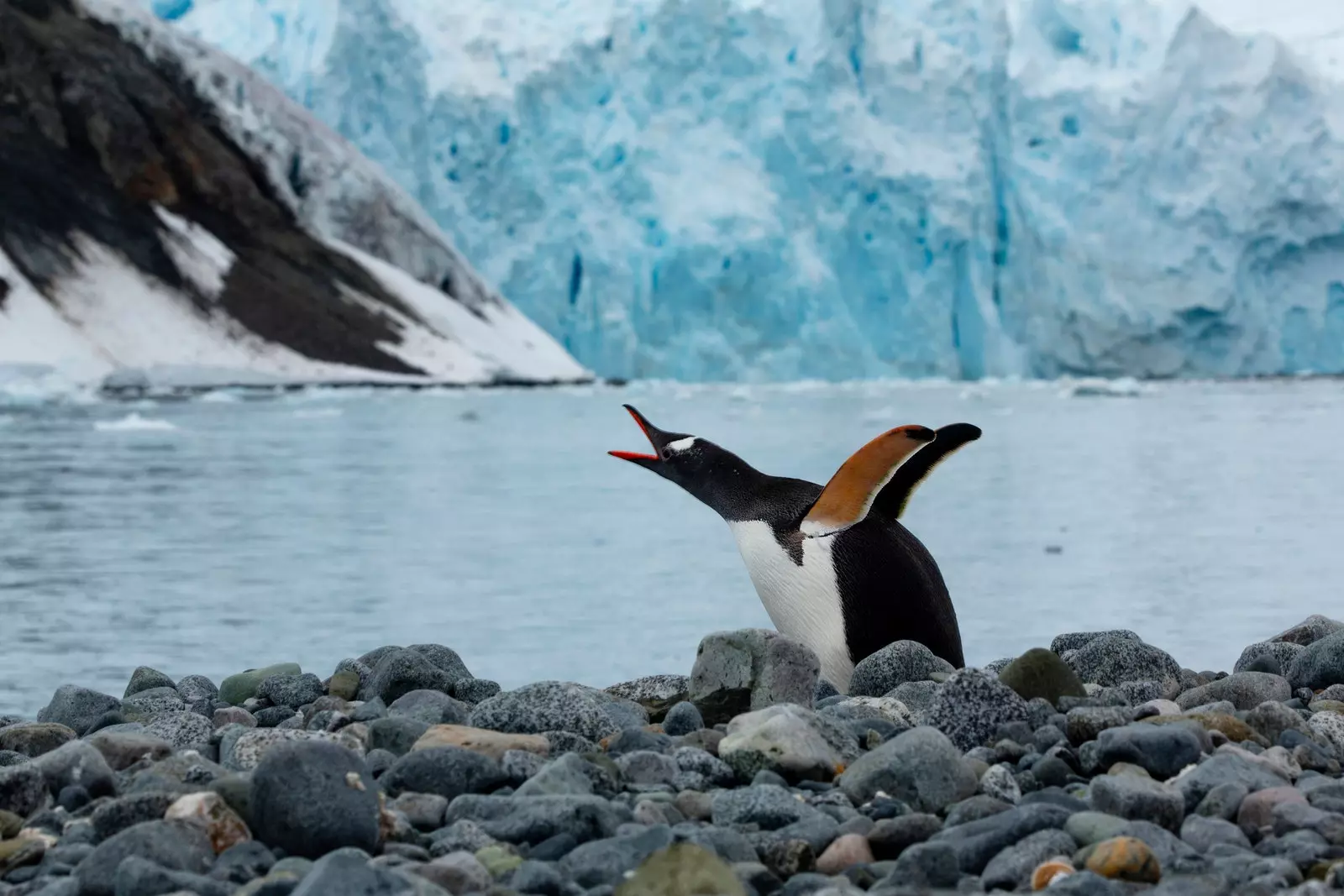
Why is it urgent to protect our oceans?
If it seems dangerous to you to live in the middle of the 19th century in some parts of the world, wait until you see how hundreds of marine species live in our oceans and to the dangers to which they are exposed daily due to the unbridled exploitation of the oceans by human beings. we can know thanks to an interactive map that has developed greenpeace in collaboration with the** Universities of York and Oxford** in a study called 30x30: Guide to the protection of the oceans.
This study, one of the largest of its kind in history, is the result of an investigation of more than a year carried out by leading scientists from the University of York, the University of Oxford and Greenpeace. Researchers have divided all the oceans, which cover almost half the planet, in 25,000 units of 100×100 kilometers , and then have mapped the distribution of 458 different preservation features , including the distribution of fauna, ecosystems or key oceanographic features.
What is the OBJETIVE? Create a global network of ocean sanctuaries , free from the most harmful human activity.
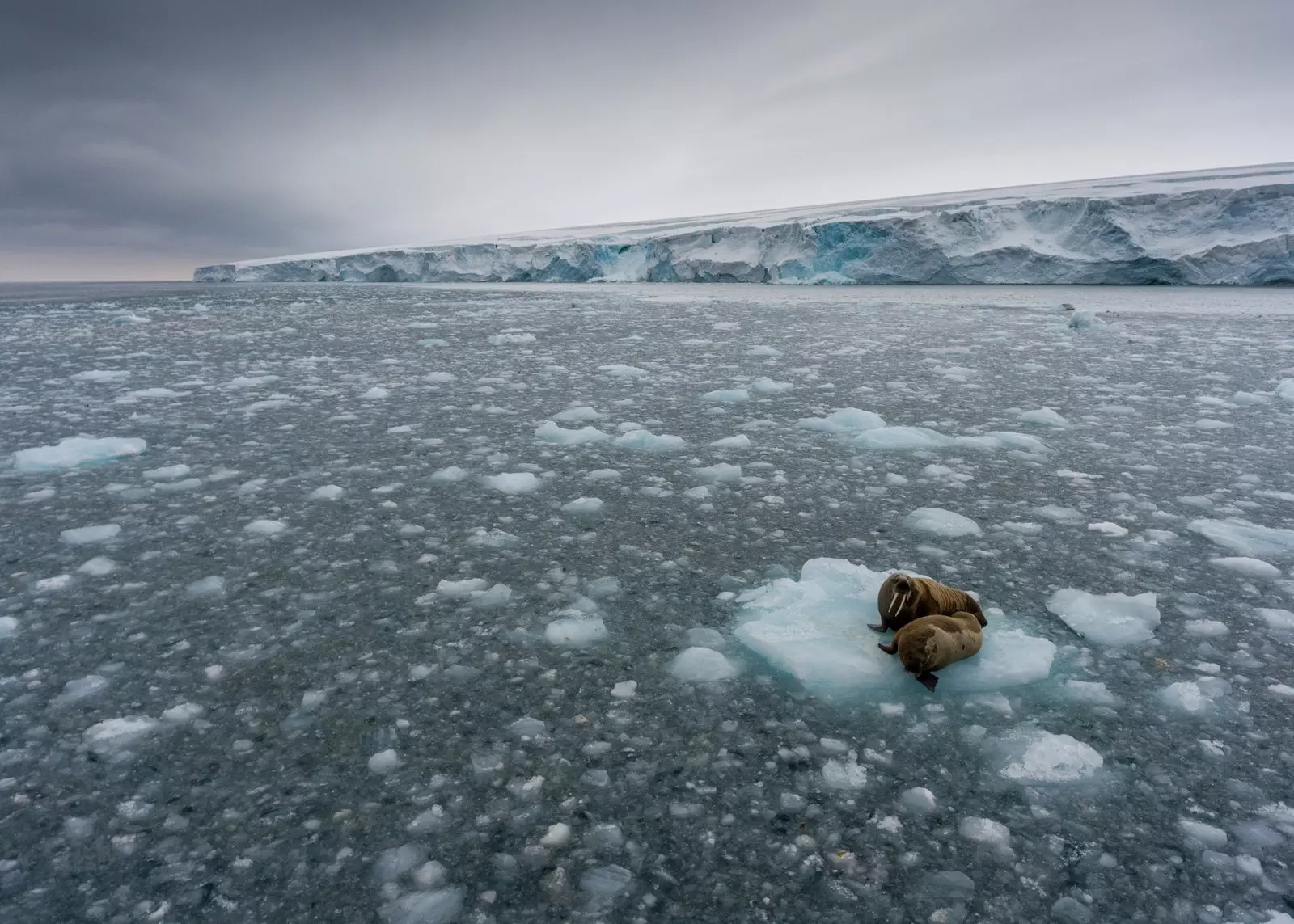
The goal is to create an ocean sanctuary.
“The speed at which the high seas have been depleted of some of its most spectacular and iconic animals continues to amaze us,” Professor Callum Roberts, a marine conservation biologist at the University of York, says in the report. “ The extraordinary losses of seabirds, turtles, sharks and marine mammals reveal a flawed system of governance that United Nations governments must be resolved urgently . This report shows how protected areas could be developed in international waters to create a protection net that will help prevent the extinction of numerous species and enable them to survive on a planet facing global change,” he added.
According to the Greenpeace report, currently, less than 3% of the oceans are protected , that's why the scientific community demands that by 2030 at least 30% be.
This is one of the most important debates that are about to take place in the Global Ocean Treaty in 2020 , an important event that will take place at the United Nations next month from March 23 to April 3.
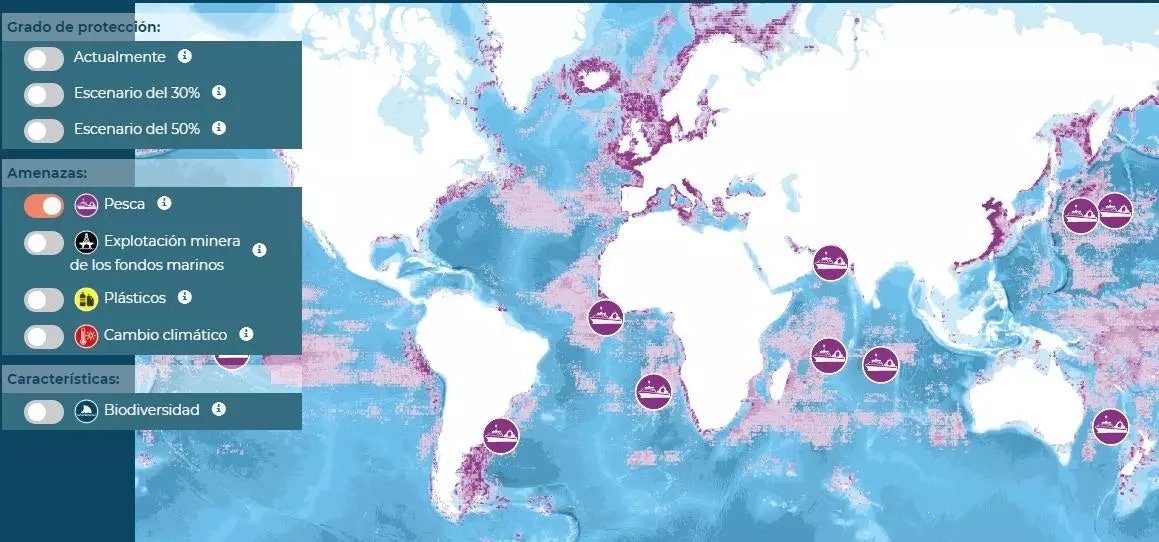
The threat from fishing.
Meanwhile we can see through this map How would the ocean be if at least 30% and 50% of its surface were protected?.
“Our oceans are under threat like never before in history. For the first time, research shows that it is entirely possible to create a robust network of marine sanctuaries across the planet . They are not just lines drawn on a map, but a coherent and interconnected protection network that encompasses areas of high biodiversity of species, migration corridors and critical ecosystems”, explains Pilar Marcos, responsible for the Oceans campaign at Greenpeace, from the United Nations. , where he has participated in the negotiations that are taking place.
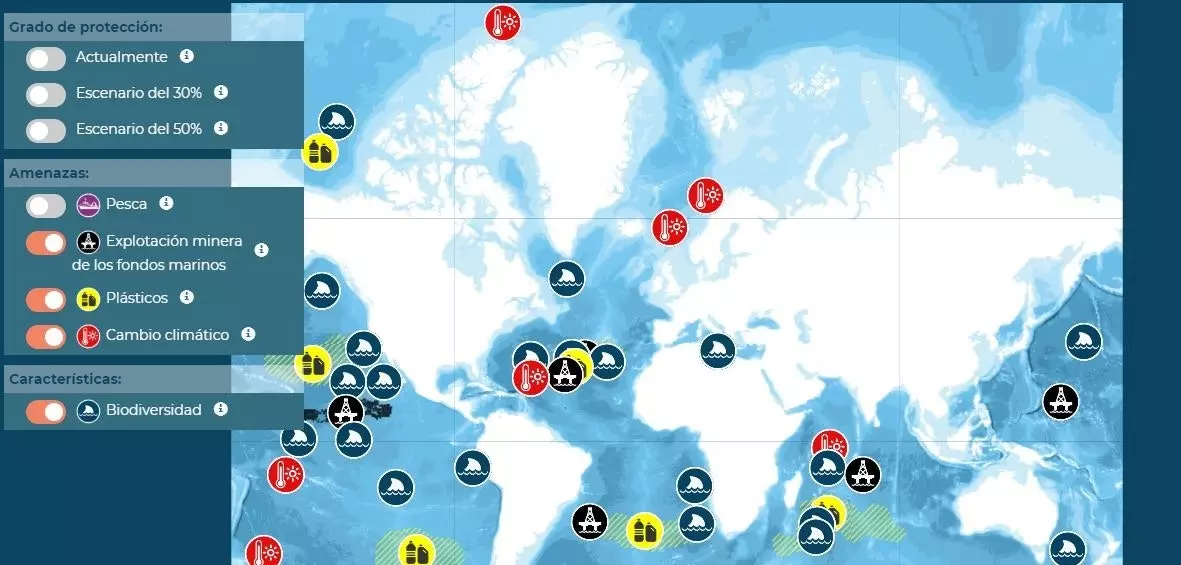
More threats to our seas.
ILLEGAL FISHING, PLASTIC, MINERALS EXTRACTIONS AND CLIMATE CHANGE
What threats is this map talking about? Despite having all the information in the world at our fingertips, perhaps many are unaware that bluefin tuna that we enjoy in sushi is in danger of extinction. As the map indicates (in the fishing tab) we can see that in Asia one of the most threatened species is the bluefin tuna.
“Southern and Atlantic bluefin tuna are already classified as in danger of extinction and those of the Pacific meet at just 4% of historical levels . The traditional methods of trapping in traps and with lines have given way to large seiners (where a large net is dropped under a school of fish like a drawstring bag) targeting them when they congregate to spawn. The fashion of sushi has driven this demand”, says the Greenpeace map.
There is nothing crueler than shark fishing , also in danger of extinction, as indicated on the map. As only the fins are of interest (consumed for social status and not for their nutritional value), they are cut and, once cut, the sharks are thrown into the sea. And he not only talks about threatened species but also about how some massive fishing systems like the longline They kill non-target species like sea turtles or rays, etc.
Thanks to this map we can learn about many more dangers: mining operations of our seabed , the plastics , or rather, the** microplastics generated by fishing activities** and the so-called “five turns”, which are the islands of floating plastic.
“Plastic pollution in the ocean poses a massive threat to marine wildlife through ingestion of and entanglement in plastic. For example, seabirds such as gannets sometimes collect floating plastic debris and parts of fishing nets to build their nests. Ropes can lead to death by strangulation”.
And another threat that we can find on the map: the climate change . The map explains, for example, how the Arctic Ocean is undergoing rapid changes.
“Researchers have analyzed the data obtained from moored buoys and have discovered that warm water from the Atlantic has passed the barrier and has entered arctic waters , which has caused the ice to melt from below. This "atlantification" of the Eurasian basin of the Arctic Ocean explains the rapid disappearance of Arctic ice and is also likely to cause important biogeochemical and geophysical changes that will affect marine life in the region.
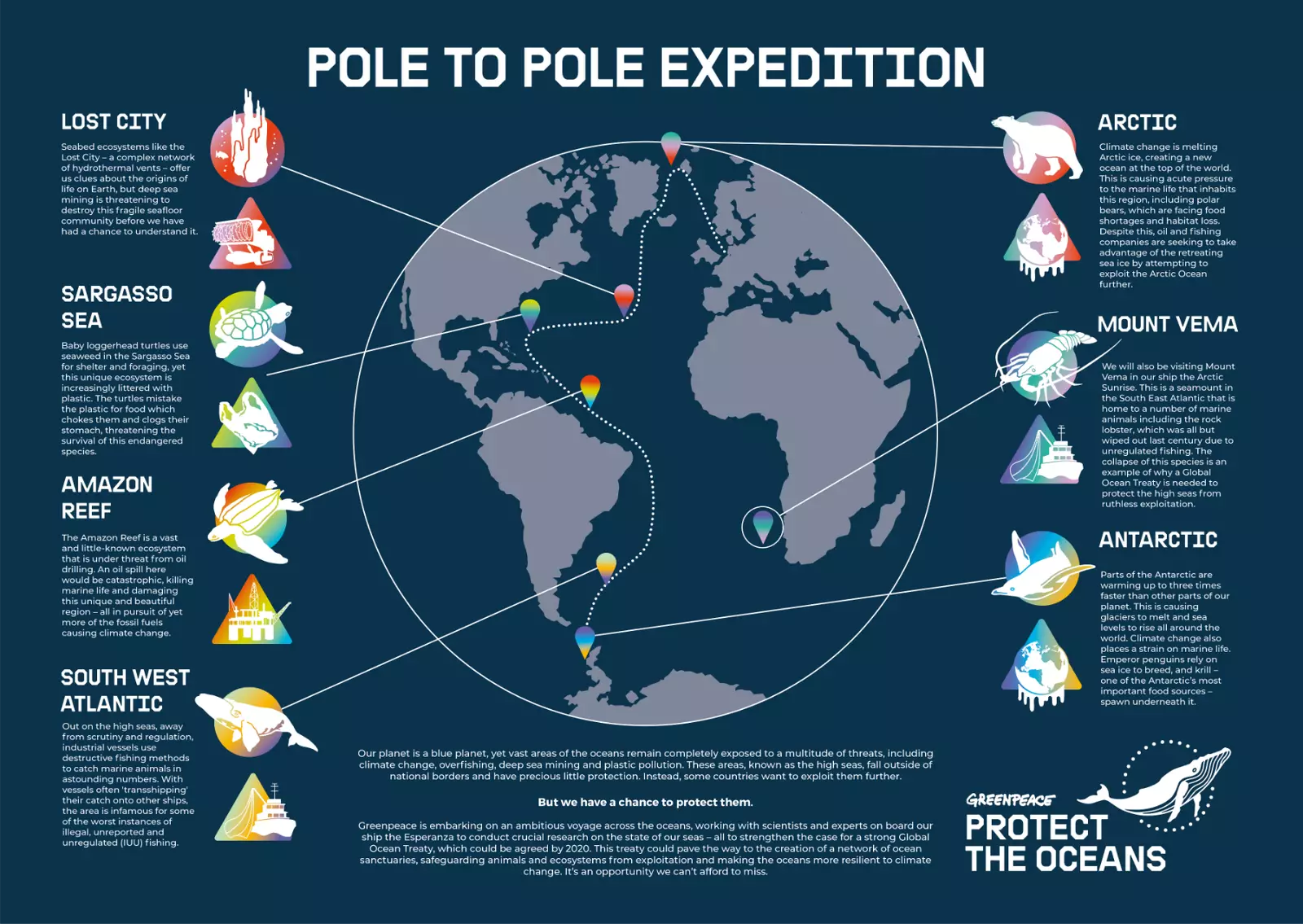
Expedition of 'Pole to Pole'.
THE EXPEDITION FROM POLE TO POLE
In this sense, Greenpeace has been carrying out since last year the 'Pole to Pole' expedition to raise awareness of the importance of protecting arctic areas.
“For a year, with two of Greenpeace's flagships, the arctic-sunrise and the Hope we have been traveling from "Pole to Pole" the Atlantic Ocean from north to south and from east to west. The expedition began in spring 2019 in the Arctic and ends next spring 2020 also in Antarctica. We start the expedition in the arctic , evidencing the impacts of climate change on this frozen sea, carrying out the northernmost concert on the planet and we will finish this spring on the Antarctic continent where we are showing the impact of climate change on penguin colonies”, Pilar Marcos, responsible for the Oceans campaign at Greenpeace, told Traveler.es.
What is the situation of the penguins? what needs do they have? "Not all penguin species on the planet are strong enough to live in Antarctica, but those that have managed to adapt to this environment have done so impressively. Because remember, if the weather gets bad they can't afford to fly elsewhere . But the industrial fishery is taking advantage of the vulnerability of the Antarctic oceans and is already expanding through its waters, Pilar Marcos told Traveler.es.
And she adds: "In addition, the entire Antarctic continent is already suffering the consequences of climate change. The threat of climate change makes it difficult for them to survive , and that problem is aggravated by the fishing industry that has already sent its huge ships to Antarctic waters to extract the precious krill , a small crustacean that is the basis of life in Antarctica. And this is just the tip of the spear: your presence opens the door of this unique environment to other industries."
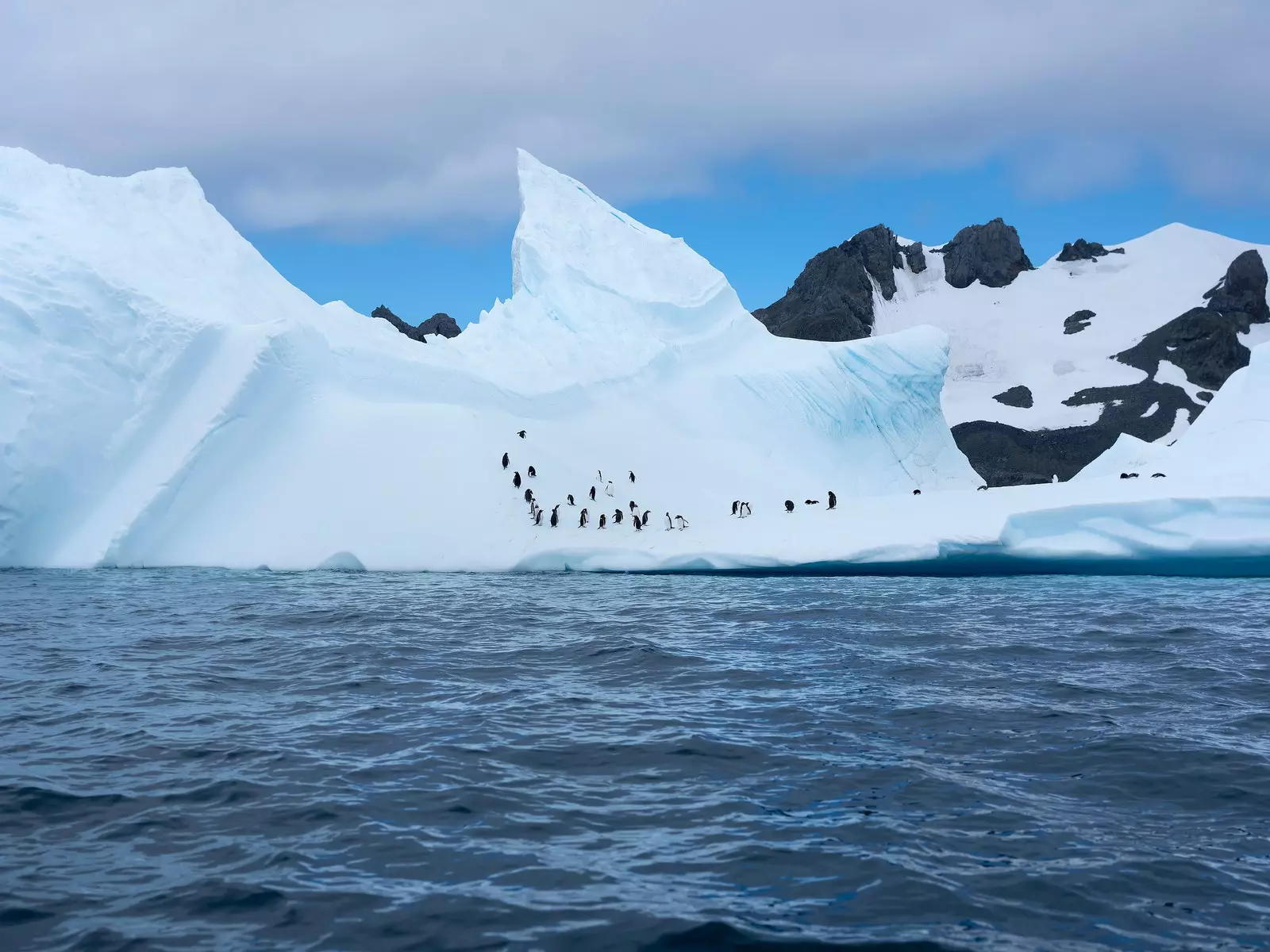
Images taken on the 'Polo a Polo' expedition.
WHY WE MUST URGENTLY PROTECT THE OCEANS
1. They are unknown. According to the Greenpeace study, the same is known about the Moon than about the ocean floor. In just 10 years, between 2000 and 2010, up to 6,000 new species were recorded.
2. We do not want an ocean without fish. “In more than half of the seas, 55% of its surface, fishing activities are carried out. 59.9% of the fish stocks analyzed are exploited to their maximum sustainable yield”, the report states.
3. Destruction by seabed mining is imminent.
4. The Arctic disappears and, with it, its biodiversity. It is currently the most unprotected ocean.
5.Plastic pollution. In 1998, a plastic bag was found at a depth of 10,898 meters. It is estimated that at least 690 species have encountered marine debris.
6.Climate change. The deep ocean is the world's largest store of carbon dioxide. If this biological pump did not exist in the open sea, current atmospheric CO2 concentrations would be about 200 ppm (50%) higher than they are. That is ** we could not live on Earth. **
Informing you is the only tool to protect the oceans. Making small decisions in your day to day is also in your hands. Do you want to do more? This is the request they are carrying out.
